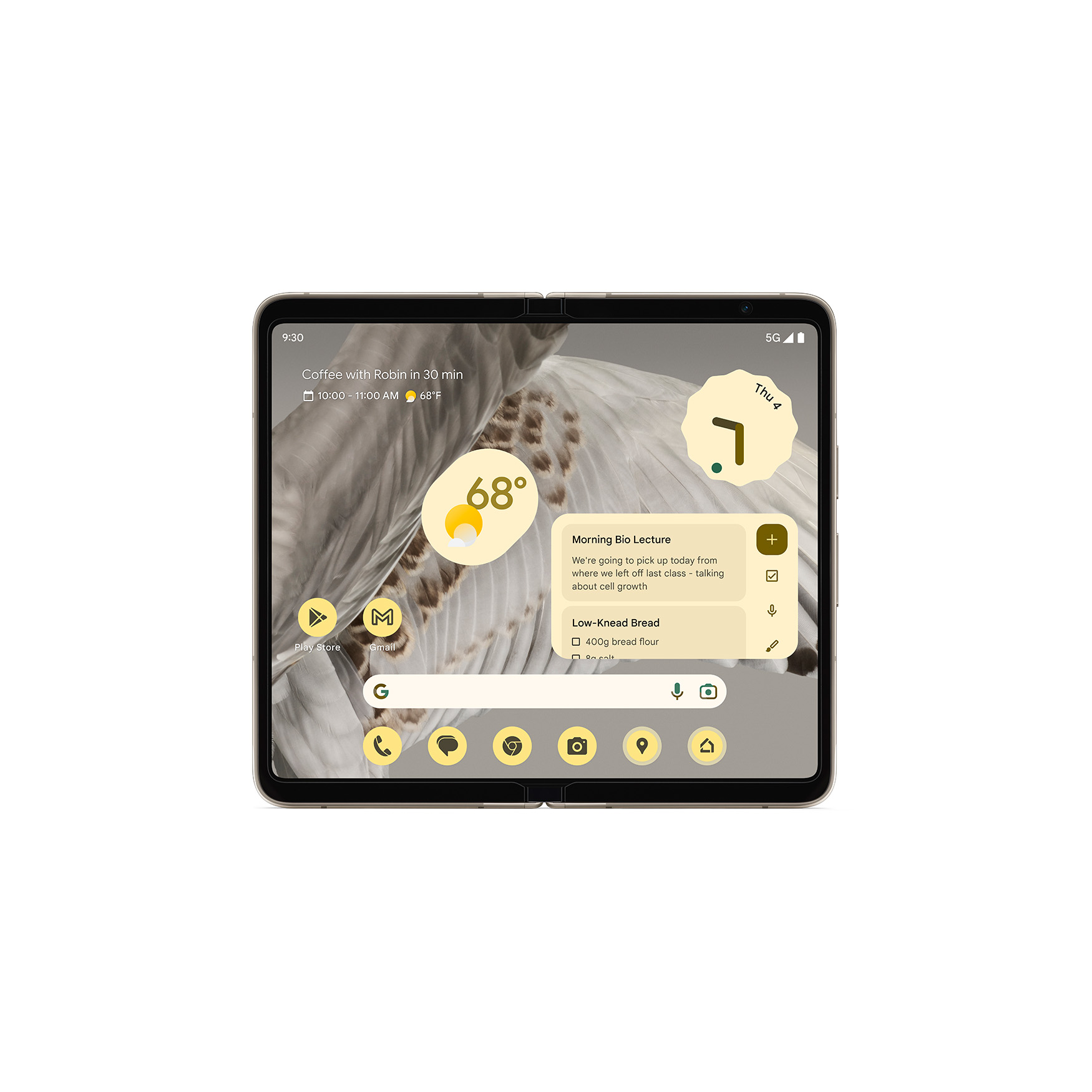Affiliate links on Android Authority may earn us a commission. Learn more.
Google Pixel Fold vs Samsung Galaxy Z Fold 4: Which one should you buy?
After months of leaks and speculation, Google has finally taken the wraps off the Pixel Fold. This marks the company’s first foray into the foldable smartphone market, where it has to compete against established offerings from Samsung and only a few others. And even though Google’s smartphone lineup has traditionally undercut rival flagships, that’s not the case here. The Pixel Fold goes up vs Samsung’s Galaxy Z Fold 4 in terms of both form factor and price. Does Google have what it takes to compete? Let’s find out.
Need an express summary? Here’s a quick rundown of the key differences between the Google Pixel Fold vs Samsung Galaxy Z Fold 4:
- The Pixel Fold features a waterdrop-style hinge, allowing it to fold flatter. This means it has a less prominent crease than the Galaxy Z Fold 4.
- Google’s foldable is shorter and wider than the Galaxy Z Fold 4, with its shape almost resembling a passport. This makes the Pixel Fold feel closer to a regular smartphone when used in its folded state.
- The Galaxy Z Fold 4 features a slightly more powerful and efficient Snapdragon 8 Plus Gen 1 SoC compared to the Pixel Fold’s Tensor G2 chip.
- The Pixel Fold offers longer-range (5x) optical zoom vs the Z Fold 4’s 3x telephoto lens.
- The Galaxy Z Fold 4 is 20g lighter than the Pixel Fold.
- The Pixel Fold packs a 9% larger battery. However, efficiency differences between the two phones will likely nullify that advantage.
- The Galaxy Z Fold 4 supports Samsung’s S Pen, which comes at an additional cost. Google doesn't offer any stylus support on its foldable.
Keep reading to know more about how these two foldables differ from each other.
Google Pixel Fold vs Samsung Galaxy Z Fold 4: Specs
| Google Pixel Fold | Samsung Galaxy Z Fold 4 | |
|---|---|---|
Display | Google Pixel Fold Exterior: - 5.8-inch Dynamic AMOLED - 120Hz refresh rate - 2,092 x 1,080 Interior: - 7.6-inch Dynamic AMOLED - 120Hz refresh rate - 2,208 x 1,840 | Samsung Galaxy Z Fold 4 Exterior: - 6.2-inch Dynamic AMOLED - 120Hz refresh rate - 2,316 x 904 Interior: - 7.6-inch Dynamic AMOLED - 120Hz refresh rate - 2,176 x 1,812 |
Processor | Google Pixel Fold Tensor G2 Titan M2 security coprocessor | Samsung Galaxy Z Fold 4 Qualcomm Snapdragon 8 Plus Gen 1 |
RAM | Google Pixel Fold 12GB LPDDR5 RAM | Samsung Galaxy Z Fold 4 12GB LPDDR5 RAM |
Storage | Google Pixel Fold 256GB or 512GB UFS 3.1 | Samsung Galaxy Z Fold 4 256, 512GB, or 1TB UFS 3.1 |
Battery and power | Google Pixel Fold 4,821mAh (typical) 21W wired charging 7.5W wireless charging | Samsung Galaxy Z Fold 4 4,400mAh 25W wired charging 12W Qi wireless charging Wireless PowerShare |
Cameras | Google Pixel Fold Rear: - 48MP wide main sensor (ƒ/1.7, 1/2-inch sensor, 0.8μm, 82° FoV, OIS, CLAF) - 10.8MP ultrawide (ƒ/2.2, 1/3-inch sensor, 1.25μm, 121.1° FoV, Lens correction) - 10.8MP telephoto (ƒ/3.05, 1/3.1-inch sensor, 1.22μm, 21.9° FoV, 5x optical zoom) Front: - 9.5MP wide (ƒ/2.2, 1.22μm, 84° FoV, Fixed focus) Internal: - 8MP wide (ƒ/2.0, 1.12μm, 84° FoV, Fixed focus) | Samsung Galaxy Z Fold 4 Rear: - 50MP wide, 1.0μm, OIS, Dual Pixel AF, ƒ/1.8 - 12MP ultra-wide, 1.12μm, ƒ/2.2 - 10MP telephoto, 1.0μm, OIS, 3x zoom, ƒ/2.4 Exterior front: - 10MP ƒ/2.2, 1.22μm Internal under-display: - 4MP, 2.0μm, ƒ/1.8 |
Software | Google Pixel Fold Pixel UI Android 13 3 Android updates 5 years of security updates | Samsung Galaxy Z Fold 4 One UI 4.1 Android 12 4 years of Android updates 5 years of security updates |
IP rating | Google Pixel Fold IPX8 certification | Samsung Galaxy Z Fold 4 IPX8 certification |
Biometrics | Google Pixel Fold Power button fingerprint scanner Face unlock | Samsung Galaxy Z Fold 4 Power button fingerprint scanner Face unlock |
Dimensions | Google Pixel Fold Folded: - 139.7 x 79.5 x 12.1mm Unfolded: - 139.7 x 158.7 x 5.8mm | Samsung Galaxy Z Fold 4 Folded: - 155.1 x 67.1 x 15.8mm (measured at hinge) Unfolded: - 155.1 x 130.1 x 6.3mm |
Weight | Google Pixel Fold 283g | Samsung Galaxy Z Fold 4 263g |
Display materials | Google Pixel Fold Gorilla Glass Victus (external display) Ultra Thin Glass with protective plastic layer (Internal folding display) | Samsung Galaxy Z Fold 4 Gorilla Glass Victus Plus (external display) Ultra Thin Glass with protective plastic layer (Internal folding display) |
Colors | Google Pixel Fold Obsidian, Porcelain | Samsung Galaxy Z Fold 4 Global: Graygreen, Phantom Black, Beige |
For nearly three generations now, Samsung has played it rather safe with its foldable lineup. Every year, we’ve seen similar designs and only incremental improvements like water resistance and an under-display selfie camera. Even if you know about the minor differences between each Galaxy Fold, chances are you won’t be able to quickly identify which generation you’re looking at.
The Pixel Fold takes a completely different direction meanwhile, with a unique design compared to most existing foldables. It also boasts a rear camera bump that’s immediately recognizable, just like the Pixel 7 series.
When folded, the Pixel Fold measures 139mm tall and 79mm wide versus the Galaxy Z Fold 4’s 155mm and 67mm, respectively. In other words, Google’s foldable is significantly shorter and wider. In a blog post, the company said that the phone’s design was inspired by passports. Indeed, the Pixel Fold is quite a bit thinner than the Galaxy Z Fold 4.
These different dimensions also mean that the Pixel Fold and Galaxy Z Fold 4 differ in terms of their cover display sizes. The outer display of Google’s foldable measures 5.8 inches diagonal, while the inner one nearly approaches a small tablet with 7.6 inches of usable area. On the other hand, the Z Fold 4’s cover display is larger at 6.2 inches. However, opening the phone reveals an inner display that matches the Pixel Fold’s 7.6 inches.
Google claims a higher peak brightness, but you probably won't notice it in the real world.
The OLED displays on both phones refresh at a smooth 120Hz refresh rate. Google claims a higher peak brightness of 1,550 nits for the outer display versus the Fold 4’s 1,000 nits. However, our eyes’ perception of brightness doesn’t scale linearly and Google has only used a 5% window to measure peak brightness. All in all, the Pixel Fold won’t appear 50% brighter in the real world. In fact, you may not even notice a difference between the two displays.
As for processing power, both take rather different approaches once again. Google has opted for its in-house Tensor G2 chip, while Samsung includes Qualcomm’s Snapdragon 8 Plus Gen 1 SoC. Both chips represent some of the best smartphone silicon on the market today, but there are some differences. Our Tensor G2 benchmarking found that the Snapdragon chip runs cooler and provides additional graphics processing power in a more energy-efficient package. That should translate to battery life gains, as we’ll discuss in a later section.
Both phones include 256GB of storage and 12GB of RAM, but paying a bit extra will net you twice as much storage. The Pixel Fold does not offer a 1TB storage tier, while Samsung’s foldable does. That said, most people don’t usually use that much storage on a smartphone.
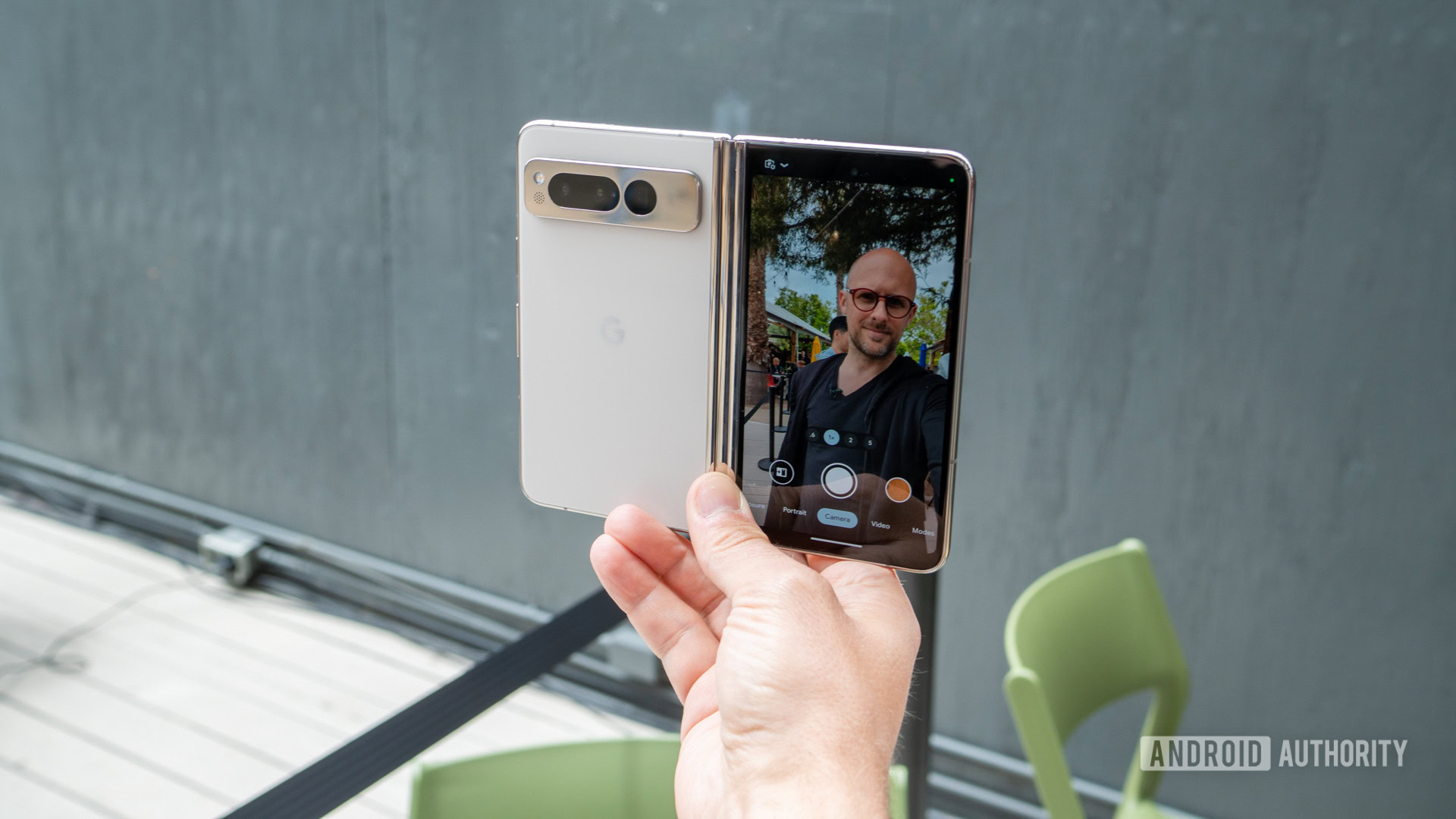
It’s worth noting Samsung’s foldable also supports the S Pen. Even though it’s sold separately, you may want one if you care about drawing or taking notes. And that may very well be the deciding factor over the Pixel Fold. The latter simply doesn’t support any active stylus input.
The Galaxy Z Fold 4 supports the S Pen, while the Pixel Fold lacks stylus input.
Over on the software side, you can expect first-party apps to properly fit the larger display on the Pixel Fold. Google claims it has optimized over 50 apps. More importantly, the company says that some will stay exclusive to the Pixel Fold for now. These optimizations should come to the Galaxy Z Fold 4 and other foldables at a later date, though. Samsung technically offers one extra year of Android version updates than Google, but the Pixel Fold will launch with Android 13. The Z Fold 4 has already used up one of its major updates going from Android 12 to 13.
Before we move on, let’s talk about durability. The Pixel Fold uses Gorilla Glass Victus on the cover screen, while the Z Fold 4 boasts the slightly more scratch-resistant Gorilla Glass Victus Plus. Both phones also use ultra-thin glass on the inside, as virtually all foldables on the market do these days.
Google and Samsung also claim IPX8 water resistance, meaning both phones will survive accidental splashes and even submersion. That’s better than other foldables, many of which don’t have any ingress protection (IP) rating whatsoever.
Google Pixel Fold vs Samsung Galaxy Z Fold 4: Size comparison
We’ve already spoken a bit about how the foldables differ in terms of their display sizes, but what do they feel like in the hand? We’ve heard some complaints about the Galaxy Z Fold 4’s tall and slender design over the years, with some finding it hard to type on the narrow cover screen. This won’t be a concern with the Pixel Fold, which is about as wide as a Galaxy S23 Ultra. We’ve praised this short-and-wide design approach in the foldable market before and found it to be just as comfortable in our Pixel Fold hands-on coverage.
The Pixel Fold sports a slightly slimmer profile thanks to a more modern hinge design. This should also make it easier to slide in and out of pockets. But it goes without saying that you’ll need to use two hands to maximize your experience when unfolding either smartphone.
We're fans of the Pixel Fold's wider stance for the comfortable typing experience on the cover screen.
Coming to weight, the Pixel Fold might feel a bit less comfortable vs the Galaxy Z Fold 4. At 283g, Google’s foldable doesn’t sound much heavier than the Z Fold 4’s 263g, but for a portable device, every gram counts. We’ve seen foldable smartphones get lighter over the years, and the Z Fold 4 took another step in that direction. Hopefully, Google shaves a few grams off next year to become more competitive in this area.
Google Pixel Fold vs Samsung Galaxy Z Fold 4: Camera
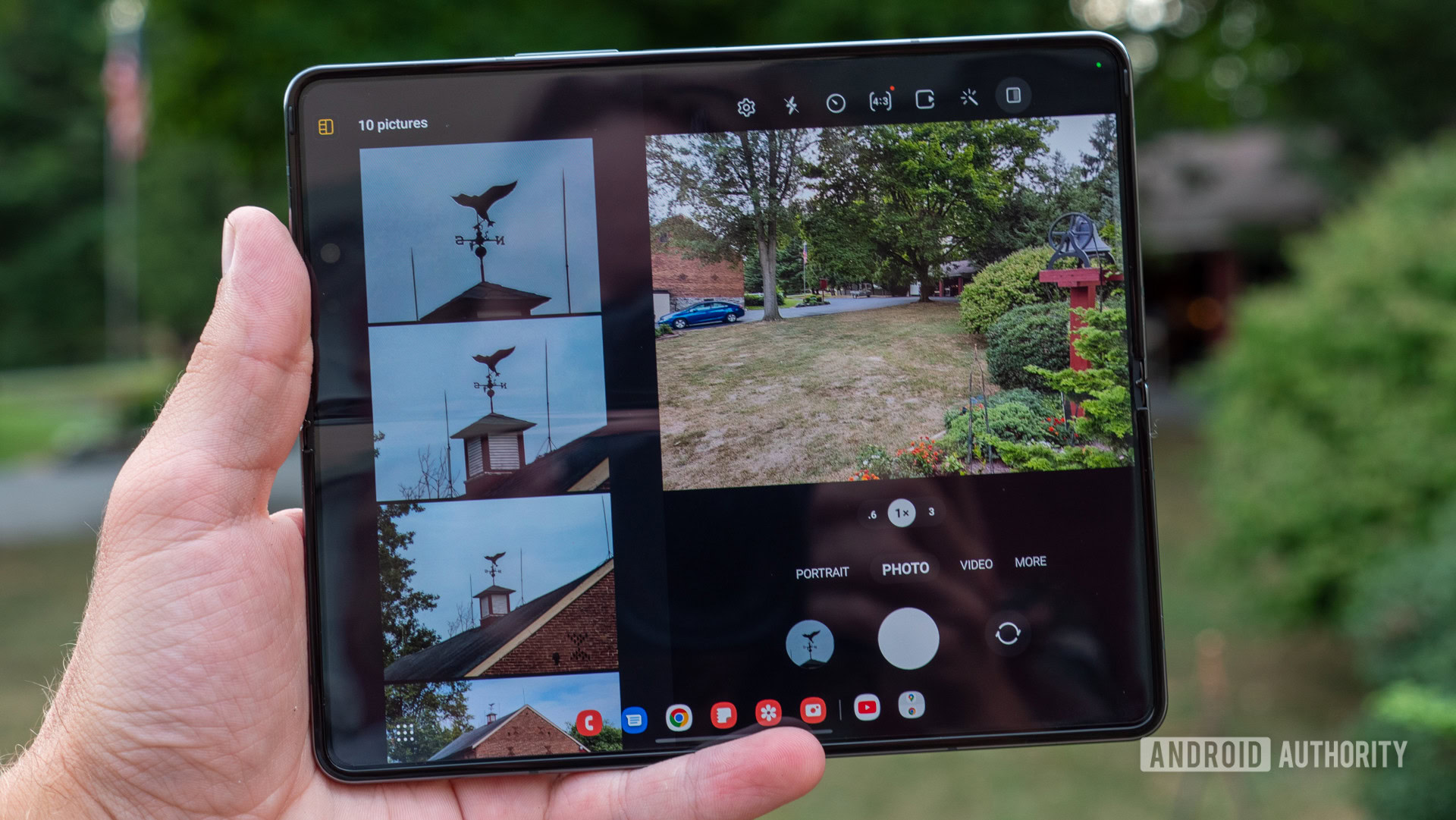
With the premium-tier pricing of the Galaxy Z Fold 4 and Pixel Fold, you’d expect both smartphones to have the best cameras on the market. That’s not necessarily the case here, as both Samsung and Google can only fit their best hardware into mainstream flagships. Still, that doesn’t mean the cameras on either foldable will let you down.
The Galaxy Z Fold 4 features a triple camera array on the rear, which includes a 50MP primary shooter, 10MP 3x telephoto, and 12MP ultrawide sensors. Meanwhile, Google has opted for a similar 48MP primary, 10.8MP ultrawide, and 10.8MP 5x telephoto set of sensors. The Pixel Fold does have a slight advantage with its extra zoom capability, though, so it might be the better pick if you care about homing in on your subjects.
Specs aside, we know that smartphone cameras tend to live by and die by their software. But luckily, both Samsung and Google excel at computational photography, helping the phones deliver excellent results in virtually any condition. We can’t pick a definitive winner until we’ve had more hands-on time with the Pixel Fold, but we haven’t been let down by its lower-end counterparts. Likewise, our Galaxy Z Fold 4 review sang praises of the phone’s cameras even if it does technically fall short of the newer S23 Ultra. Check out some of the samples we captured below.
Moving to the front-facing cameras, you’ll find comparable cameras on the cover screens of both foldables. The inner screen, meanwhile, houses one of the Galaxy Z Fold 4’s most intriguing features — an under-display 4MP shooter. That said, don’t expect it to take glamor shots while you’re out and about, as the quality is only serviceable for video calls at best. The Pixel Fold, meanwhile, includes a visible but higher-quality 8MP inner camera.
Google Pixel Fold vs Samsung Galaxy Z Fold 4: Battery life
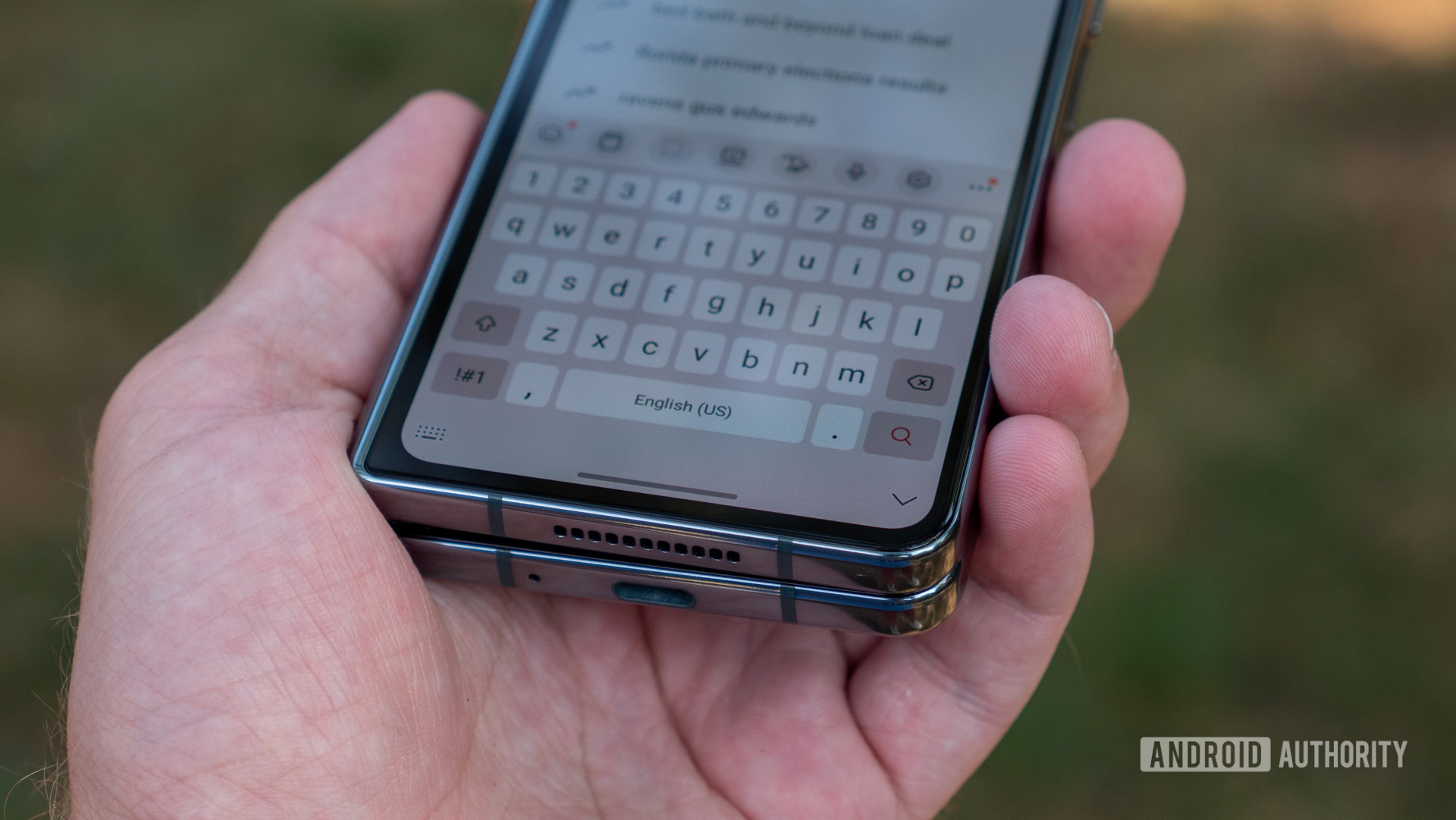
If you’re in the market for a foldable, chances are that you expect to get a lot of usage out of your smartphone. The Galaxy Z Fold 4 and Pixel Fold house almost tablet-sized displays, so it’s important to know if they’ll make it through a workday.
Our testing suggests that you can get around five and a half hours of screen-on time from the Galaxy Z Fold 4’s 4,400mAh battery. Of course, we expect better results if you use the cover screen for the majority of your tasks. Still, our testing showed that Samsung’s foldable can survive most workdays. At most, you may need a small top-up around bedtime if you use the phone unfolded a lot.
The Pixel Fold packs a larger battery, but a slightly more power-hungry chip offsets that benefit.
Google seems to have a small advantage over Samsung as the Pixel Fold packs a 4,800mAh battery. Going by the numbers, you’d expect a 10% uplift compared to the Galaxy Z Fold 4. However, the Tensor G2 in the Pixel Fold isn’t built on the more efficient manufacturing node used by Qualcomm’s Snapdragon 8 Plus Gen 1. So all in all, we expect Google’s foldable to match the Galaxy Z Fold 4, even with the larger battery in tow.
When it comes to charging speeds, Samsung and Google remain some of the most conservative brands in the smartphone industry. The Pixel Fold supports fast charging at 21W, while the Galaxy Z Fold 4 tops out at 25W instead. One silver lining is that both rely on the universal USB Power Delivery PPS standard. Unfortunately, however, neither Google nor Samsung comes close to matching the 67W and 45W we’ve seen OPPO and Tecno offer on their respective foldables. You’ll have to wait well over an hour for both Samsung and Google foldables to fully charge up.
For quick top-ups, the Galaxy Z Fold 4 and Pixel Fold can charge wirelessly at 10W and 7.5W respectively. A full charge will take several hours at these speeds, so it’s best left for short top-ups. Furthermore, only the Samsung foldable includes support for reverse wireless charging.
Google Pixel Fold vs Samsung Galaxy Z Fold 4: Price
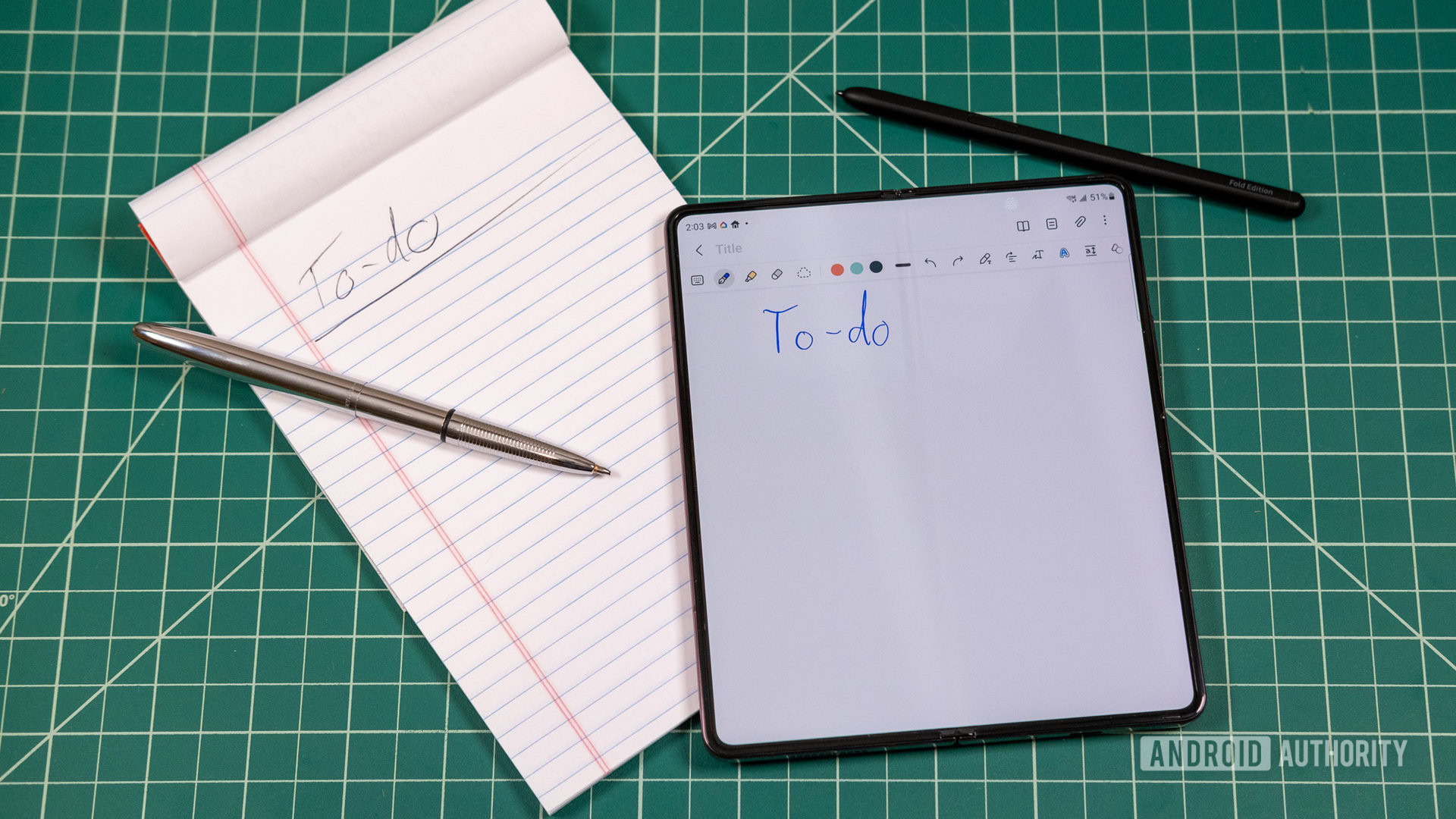
- Pixel Fold: Starts at $1,799
- Samsung Galaxy Z Fold 4: Launched at $1,799
Unlike its prior smartphones, Google hasn’t opted to undercut its closest competitors with the Pixel Fold. Its $1,799 price matches what Samsung charged for the Galaxy Z Fold 4 at launch. However, you may find Samsung’s foldable available at a lower price given that it launched several months ago.
Samsung’s foldable may also get steeper discounts as we rapidly head approach the Galaxy Z Fold 5‘s launch window. In fact, we know for a fact that it will release in July instead of August this year. So if you’re not buying the Pixel Fold immediately, you may want to see what Samsung has planned for 2023. The Pixel Fold can already be pre-ordered, with sales officially starting later in June. One silver lining to the high price is that you get a Pixel Watch included as a pre-order bonus.
At the bare minimum, the Galaxy Z Fold 5 will feature an upgraded Snapdragon SoC. But we’re also expecting changes to the hinge mechanism, which will allow for a slimmer design and less prominent crease.
Google Pixel Fold vs Samsung Galaxy Z Fold 4: Which one should you buy?
The Pixel Fold and Galaxy Z Fold 4 offer cutting-edge smartphone hardware, but they come at a rather hefty cost. Regardless, they’re unlike anything else on the market, especially in Western markets where we’ve been waiting for a competitor to disrupt Samsung’s reign. As for whether Google has a compelling enough foldable to dethrone the Galaxy Z Fold 4, it’s a close fight.
The Pixel Fold’s wider and shorter stance may improve productivity and usability for many users. It’s also slimmer, thanks to a more modern hinge design compared to the one Samsung has used for several generations. Google has also thrown in a few software tricks, like timed-exclusive foldable app optimizations. However, the gap will narrow in the coming months especially as Samsung unveils its latest hardware for 2023 and beyond.
Would you rather buy the Pixel Fold or the Galaxy Z Fold 4?
Samsung’s current-gen foldable offers a highly refined hardware package thanks to years of improvements. It sports a lighter design and gets away with a smaller battery thanks to a more efficient chipset. You may also find one on sale, making the Galaxy Z Fold 4 a compelling value vs the Pixel Fold. Which one would you spend your money on?

Large internal display
Long-term software support
FAQs
The Pixel Fold costs $1,799 and is available for pre-order right now.
No, the Pixel Fold does not have any pen or stylus support whatsoever.
